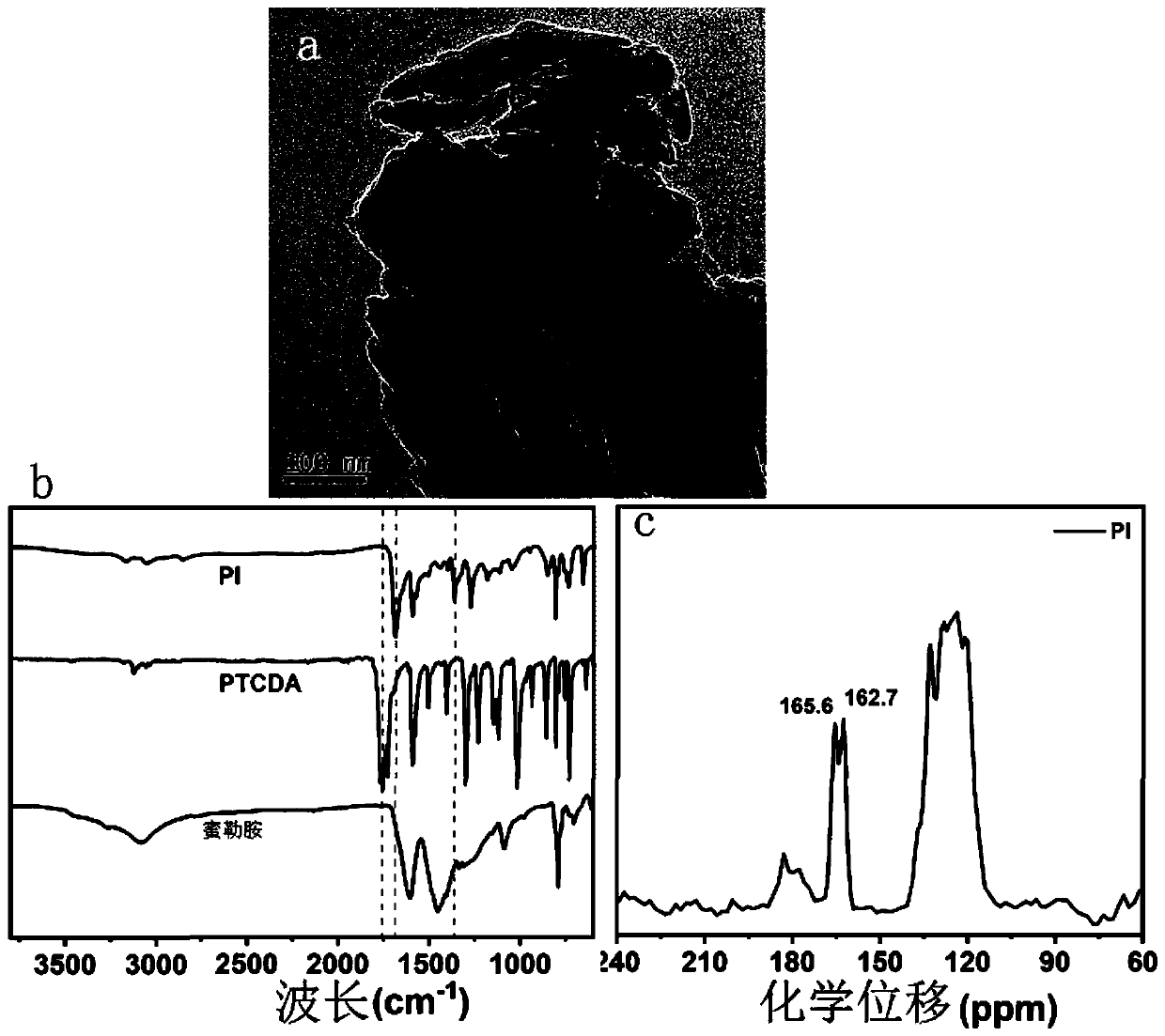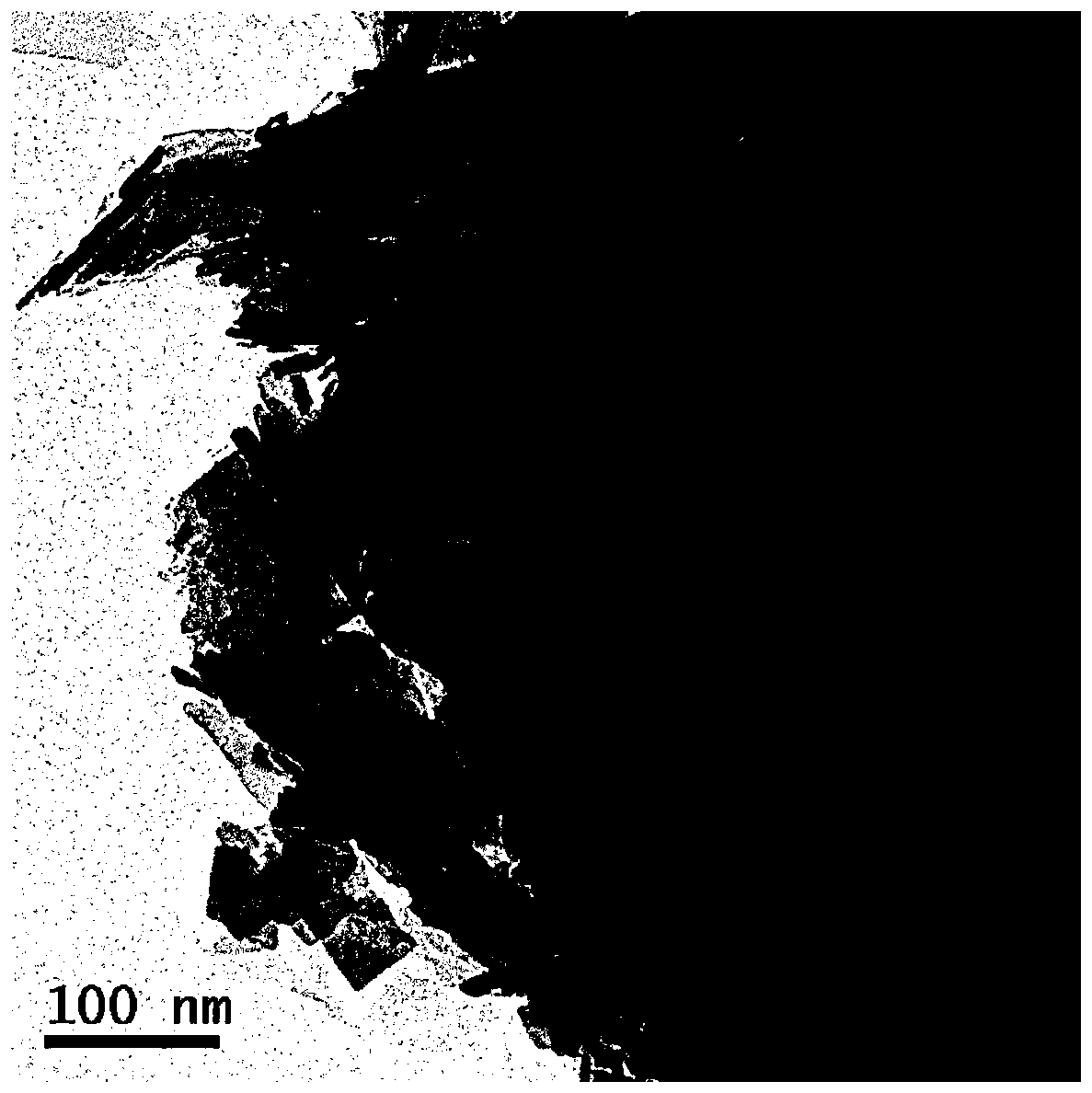Perylenebisimide and composite photocatalytic material thereof, preparation method and application of perylenebisimide and composite photocatalytic material in removal of organic pollutants in water body
A composite photocatalysis and perylene imide technology, applied in water pollutants, chemical instruments and methods, light water/sewage treatment, etc., can solve problems such as increasing economic costs and aggravating metal ion pollution, achieving low cost and promoting Adsorption and surface catalytic reaction, skeleton stabilization effect
- Summary
- Abstract
- Description
- Claims
- Application Information
AI Technical Summary
Problems solved by technology
Method used
Image
Examples
preparation example Construction
[0032] The preparation method of perylene imide / bismuth tungstate composite photocatalytic material is as follows:
[0033] (1) Calcining melamine to obtain melem; then mixing melem, perylenetetracarboxylic dianhydride, and a solvent to obtain a mixture, and then subjecting the mixture to a solvothermal reaction in an inert atmosphere to obtain peryleneimide;
[0034] (2) Dispersing the peryleneimide in step (1) into an aqueous solution containing a bismuth source and a tungsten source, and performing a hydrothermal reaction to obtain a peryleneimide / bismuth tungstate composite photocatalytic material.
Embodiment 1
[0036] The present invention first adopts the method of high-temperature calcination to synthesize melem. First, 5 g of melamine was weighed and placed in a 25 mL porcelain crucible with a cover; then, it was covered and placed in a muffle furnace with a heating rate of 5 °C / min (from room temperature to 425 °C), in an air atmosphere Calcined at 425 °C for 4 h, after cooling to room temperature, the light yellow product was centrifuged and washed 3 times with absolute ethanol, and then dried in a vacuum oven at 60 °C for 12 h to obtain melem. The perylene imide was then synthesized by a solvothermal method. First, weigh 88.1 mg of melem and 235.8 mg of perylenetetracarboxylic dianhydride in a 10 mL ground-mouth reaction flask, then add 10 mL of DMF / EG (volume ratio 1:1) mixed solvent, and ultrasonically disperse for 1 h; then , passed through argon for protection, and after checking the airtightness, placed it in a blast drying oven at 200 °C for 120 h. After the reaction wa...
Embodiment 2
[0038] The preparation of peryleneimide / bismuth tungstate composite photocatalytic material (PI@BWO) is as follows:
[0039] The present invention uses cetyltrimethylammonium bromide (CTAB) as a template agent to grow bismuth tungstate nanosheets on the surface of peryleneimide through a hydrothermal method, thereby obtaining peryleneimide / bismuth tungstate composite light Catalytic materials (PI@BWO). First, weigh 48.5 mg bismuth nitrate pentahydrate and 16.5 mg sodium tungstate dihydrate, add 5 mg hexadecyltrimethylammonium bromide dissolved in 35 mL deionized water to disperse with magnetic stirring for 30 min; then weigh again Take 30 mg of peryleneimide (prepared in Example 1) in the above mixed solution, continue stirring for 30 min to obtain a uniformly dispersed dark red suspension, and then ultrasonically disperse for 1 h; finally, transfer the mixed solution to a 50 mL poly In a tetrafluoroethylene-lined autoclave, the reaction was carried out at 120 °C for 24 h. A...
PUM
 Login to View More
Login to View More Abstract
Description
Claims
Application Information
 Login to View More
Login to View More - R&D
- Intellectual Property
- Life Sciences
- Materials
- Tech Scout
- Unparalleled Data Quality
- Higher Quality Content
- 60% Fewer Hallucinations
Browse by: Latest US Patents, China's latest patents, Technical Efficacy Thesaurus, Application Domain, Technology Topic, Popular Technical Reports.
© 2025 PatSnap. All rights reserved.Legal|Privacy policy|Modern Slavery Act Transparency Statement|Sitemap|About US| Contact US: help@patsnap.com



